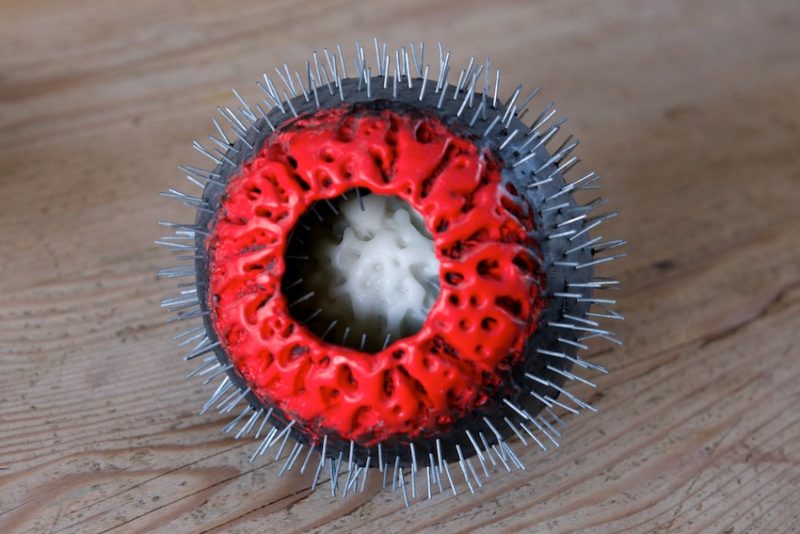
Inspired by a tumour: The organic and mysterious quality of beeswax
Kate Linforth’s work is like mushrooms and moonscapes, pleated silk, monstrous eyes and carnivorous plants. Sometimes it is so subtly coloured that it looks as though it could only have been created by nature. Sometimes the colours are artificially bright. She creates fungal growths like a ghoulish 1940’s hat on a sheep’s skull. These are so realistic, quite identifiable as Auricularia auricula-judae if one believed that fungus grew on skulls, which to my knowledge it doesn’t. Then she produces an unidentifiable black spiked sphere with an appalling hole edged in brilliantly-glowing pitted red. It reminds me of a terrible eye but, Kate tells me, this piece was inspired by a tumour. All Kate’s work has an organic gleam and depth, yet has an unpredictability which confounds our instincts and confidence in recognition.
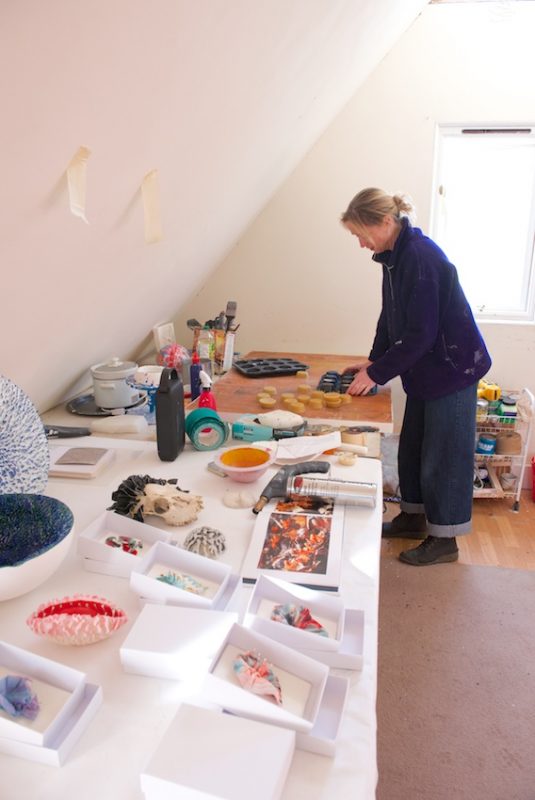
Kate Linforth in her studio, preparing clean ‘cakes’ of beeswax
Kate’s methods are very much part of her art. ‘I like people to look at my art and ask: “How did you do that!”’ The secret is Kate’s use of beeswax which she was drawn to because it is a product of the Kent countryside where she lives, and which she loves. She sources it locally when she can.
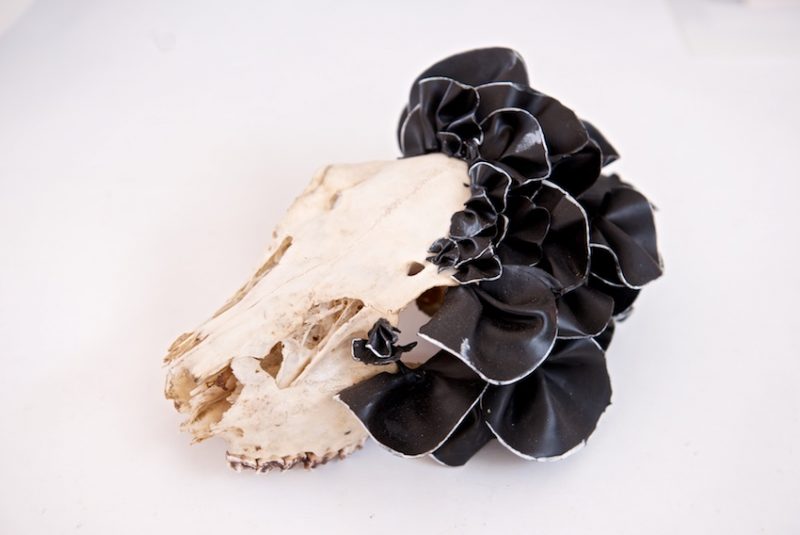
Wax fungus on a sheep’s skull
In her studio, which smells of honey, I remark a greyish lump of wax full of dead baby bees and other mysterious bee detritus which has come straight from a local beekeeper. Understanding that this is the very material which forms the stunning Lumen sculpture (pictured below), I cannot repress a cry of ‘How do you do that?’.
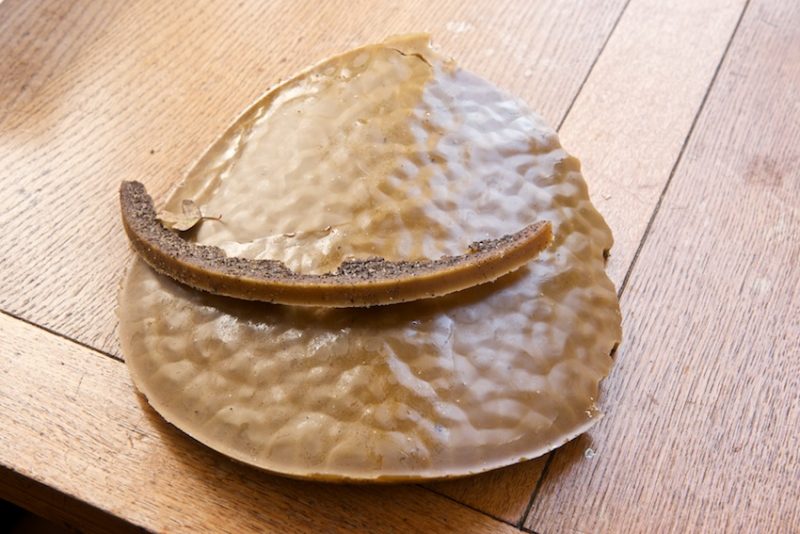
Metamorphic qualities: From beeswax . . .
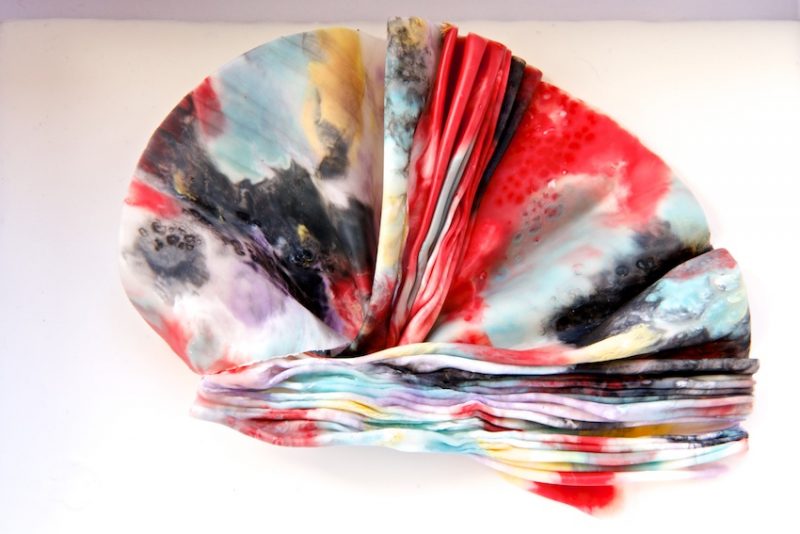
. . . to pleated silk
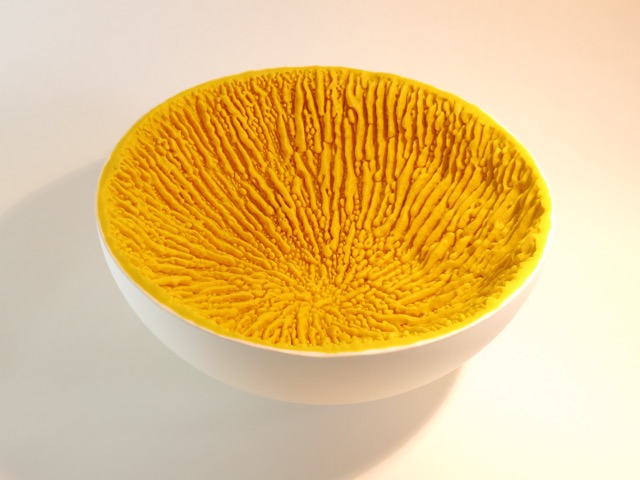
. . . to a Lumen
Kate explains. First the beeswax is melted in water and then the detritus sieved out. As the liquid cools, the cleaned wax floats to the top and sets as a hard golden disc. Kate has devised a unique method of manipulating wax with other materials to make her sculptures resilient, but with the visual and tactile properties of beeswax. In this instance she uses Gum Damar which she grinds up and gently heats with the wax in a slow cooker for six to eight hours. Then she adds coloured pigments.
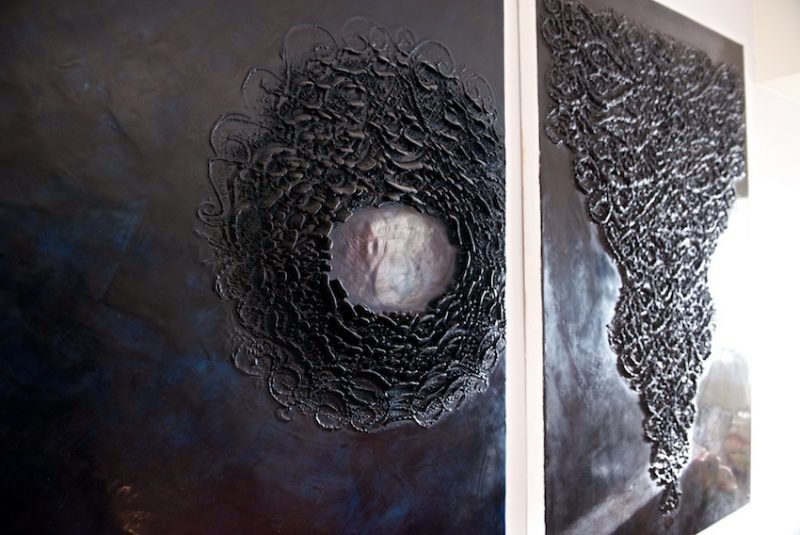
Encaustic painting: Layer upon layer of wax is brushed on and burnished
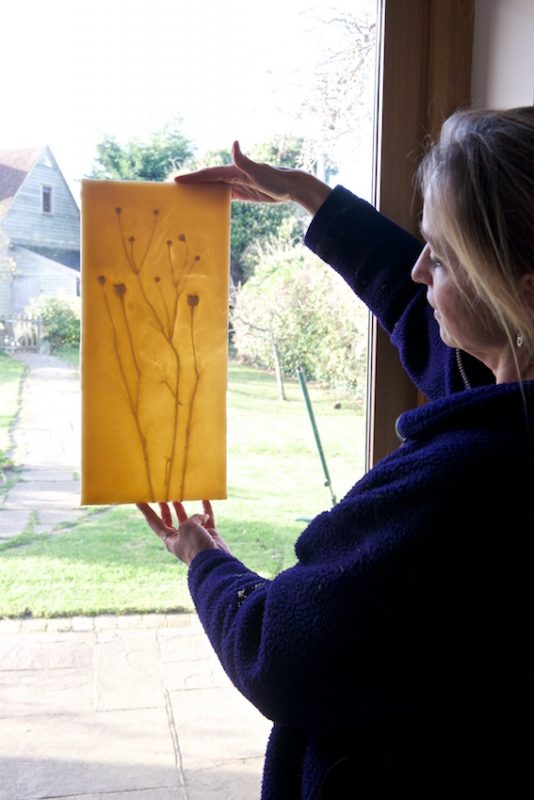
Kate shows the luminescent quality of beeswax
Kate uses the techniques of encaustic painting, brushing on layer after layer of molten wax and burnishing with a blowtorch to make sculptures and paintings. She paints on to plywood, brushing on the wax and smoothing it, until you can see depths in it which are belied by the shallowness of the frame. She says: ‘For me the challenge is getting that depth of colour. I love the surface you can achieve with wax. To get it, I use a blowtorch, a razor blade, a Tjanting, even sometimes an iron.’ Kate tells me that encaustic is an ancient technique, used by the Greeks (enkaustikos) and the Egyptians. In the British Museum, there is a Fayum mummy portrait (a portrait painted to cover the face of a body mummified for burial) painted using the encaustic technique 2000 years ago.
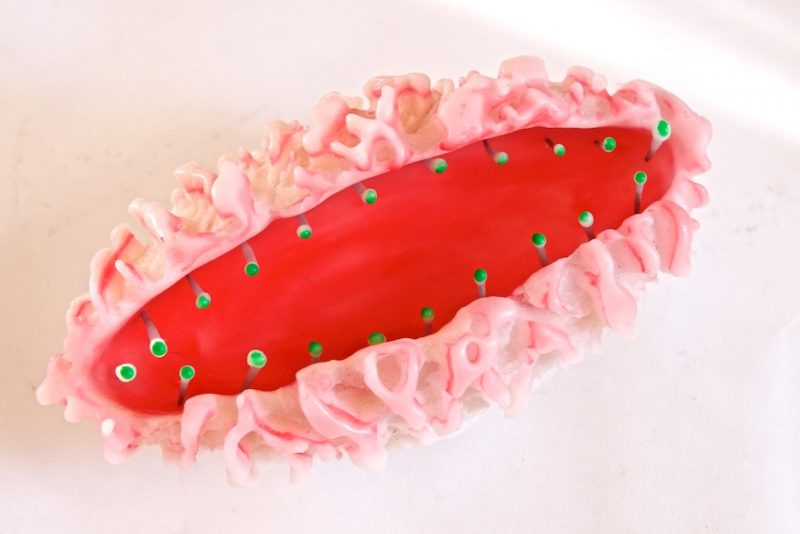
Kate manipulates beeswax into virulently-coloured pieces that look carnivorous
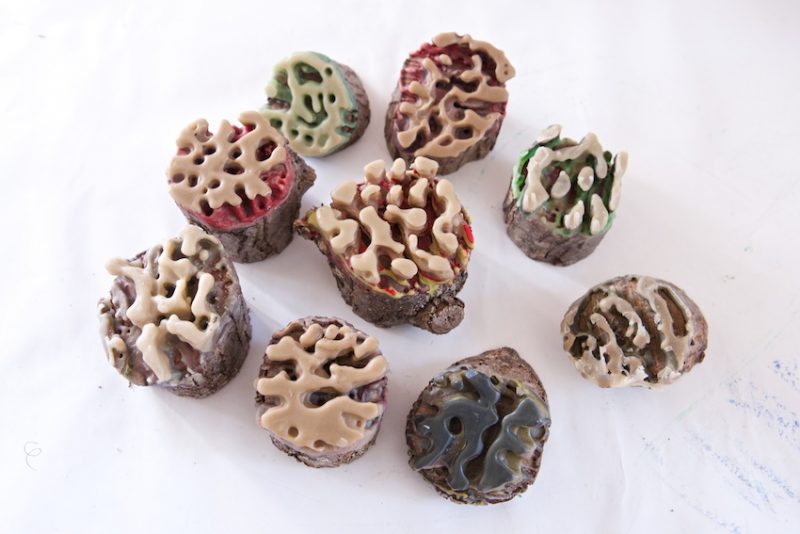
. . . and into softly-coloured pieces that look as though they might have grown in a local wood
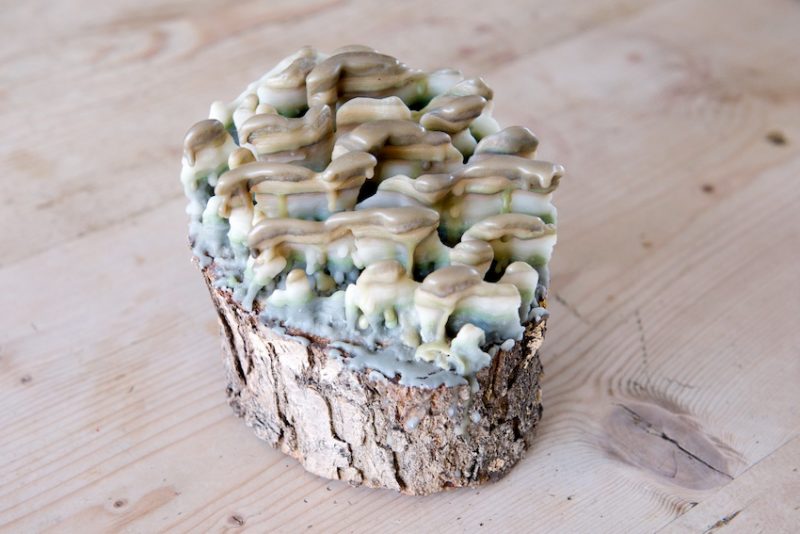
There is a luminescence in wax built up in this way that lends itself to the representation of a living organism. Wax has long been used to imitate flesh. Those with a taste for the gruesome will know the practice of Victorian medical pioneers to make wax models of skin diseases and deformities. Kate was delighted to overhear a comment at an exhibition from a viewer who looked appraisingly at a red Lumen and said: ‘It looks just like diverticulitis.’
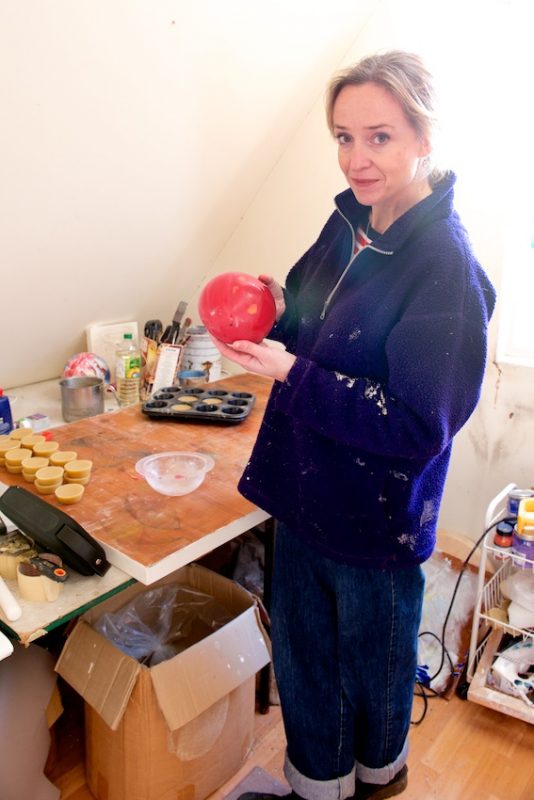
Kate has been working with wax for five years and is constantly experimenting and developing new techniques
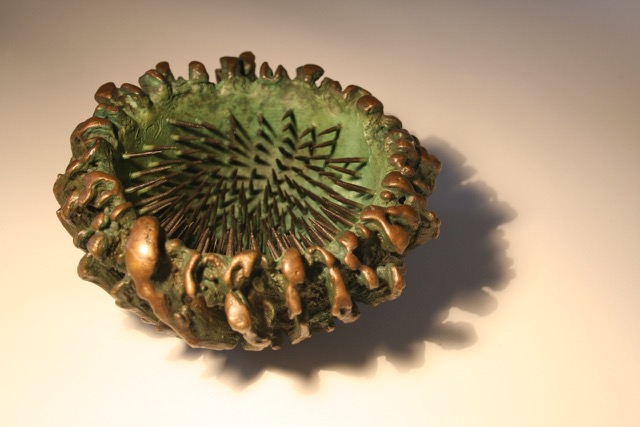
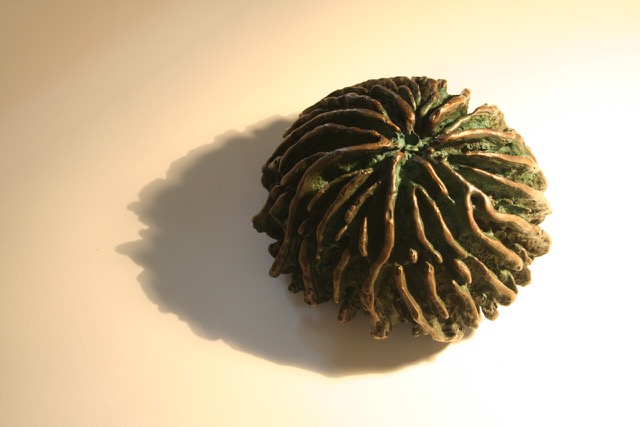
A bronze cast of a wax sculpture
Although some of the colours verge on Technicolor, Kate’s Lumen series is drawn from a natural form, based on cells seen under an electron microscope. Lumen means a measure of light and also the cavity of a blood vessel. Kate says: ‘The electron microscope can only scan and transmit in black and white and the extraordinarily-detailed images we see, are coloured artificially. So I use artificial colours for my Lumens.’ Using plain, white hemispheres, Kate wants to explore what is hidden inside a featureless exterior: ‘The difference lies inside whether it’s cellular or spiritual.’ The metamorphic properties of beeswax make each piece unique and appeal to Kate’s enquiring nature. She says: ‘The process of working in molten beeswax means that each piece is different. Every time I use beeswax, there’s an element of surprise and joy if it works.’
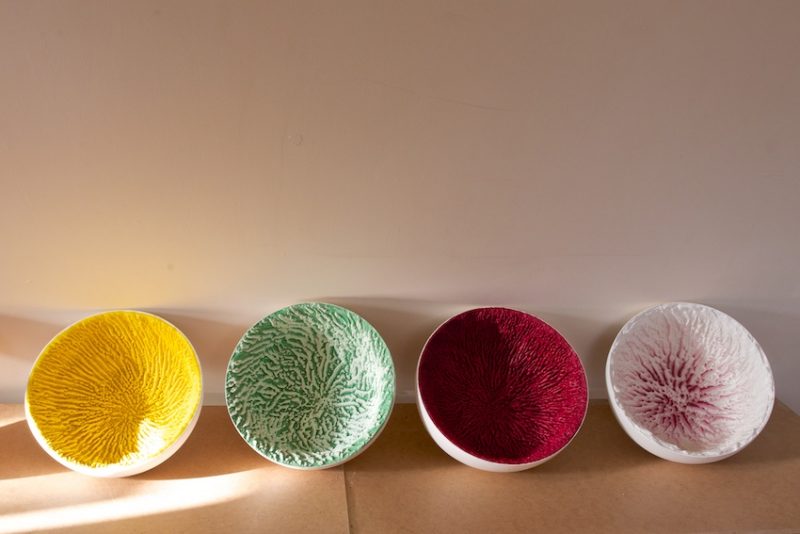
The Lumens: Each is unique in a uniformly white exterior
To create the Lumens, Kate moulds perfectly white, perfectly smooth, plaster-of-paris bowls. She scores the bowl, fuses the first few layers of wax with a blowtorch, and manipulates the flow of wax, ‘rather as you might do with a candle when you’re bored in the pub, controlling where the drips run’. As the layers build up, strange and unique alien structures take shape. She can paint up to 40 layers of beeswax mixed with the natural tree resin. A featureless orb has been split to reveal a startling interior. Sitting on the table in Kate’s studio, they are in emerald green, lipstick red, velvet black and daffodil yellow. Some are worked in two colours to create a different landscape.
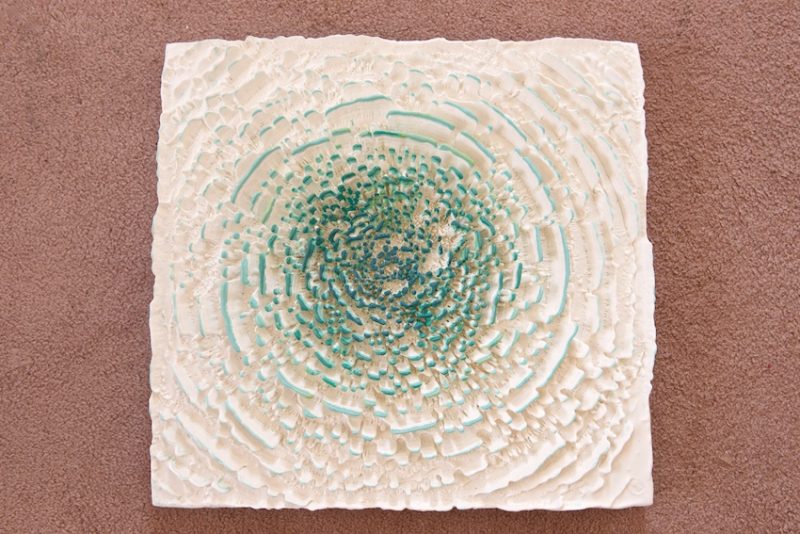
The emergence of alien landscapes

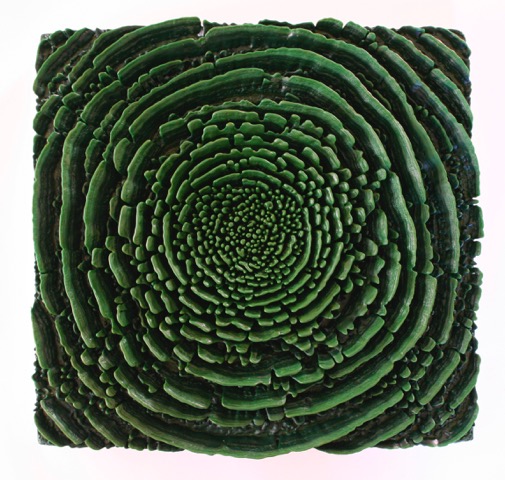
Kate has shown her Lumen series of work at the Alice Black gallery in Soho, in company with Wolfgang Buttress, Howard Hodgkin and Dante Elsner. The exhibition finished this week and was called Becoming and Dissolving: The Art of Appreciating Simple Beauty in a Naturally Imperfect World. Her work is for sale at the Lilford Gallery in Canterbury.
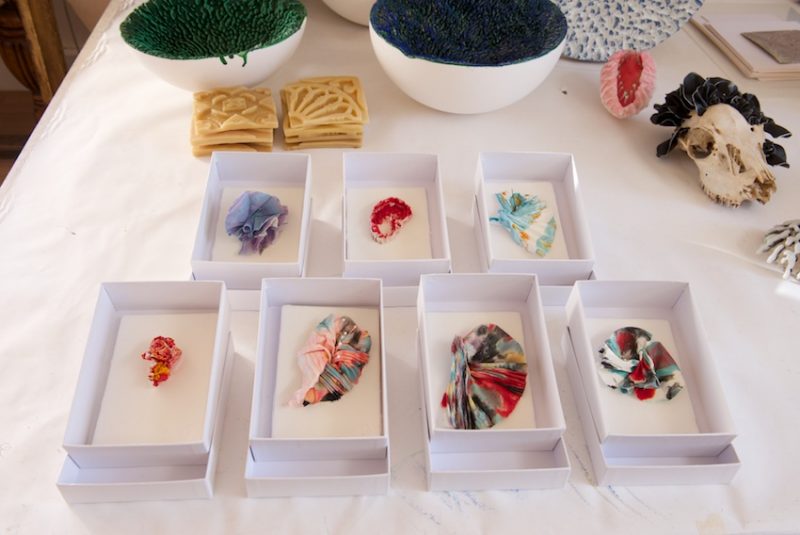
When Kate works in her studio, bees fly through the window, drawn by the warm, honey smell of beeswax. ‘I’m always polite to them but try to usher them them out. If they sting you, it’s harikari for them!’ Friendly collaboration with the bees is fundamental to her work.
Text: Posy. Photography: Lisa and Kate Linforth